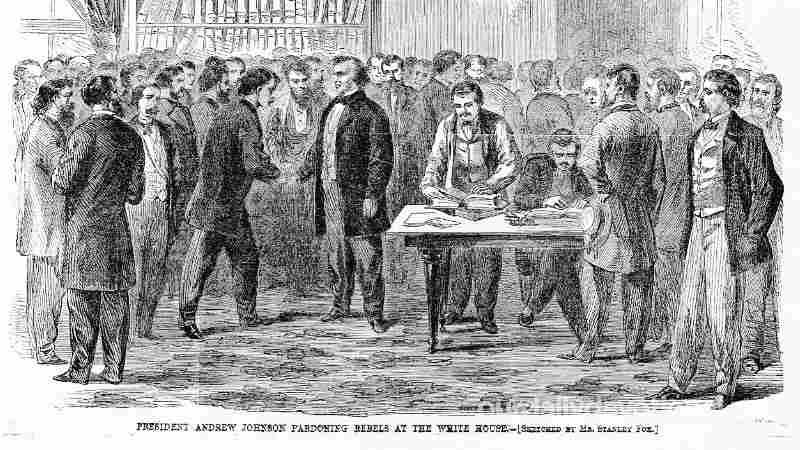The first Gospel, unanimously attributed to Matthew from the very beginning of the post-apostolic period.
(a) Content:
(A) Genealogy, birth and childhood of the Messiah king (Mt. 1-2). Jesus is presented as the son of David and the Messiah announced in the prophecies.
(B) Introduction to the public ministry of Christ (Mt. 3:1-4:17); preparatory testimony of John the Baptist; baptism and temptation of Jesus; He fixes his residence in Capernaum, according to the prophecies.
(C) Ministry of Christ in Galilee (Mt. 4:18-9:35); calling of the four main disciples (Mt. 4:18-22); summary of the ministry of teaching and healing for Palestine (Mt. 4:19-25); Sermon on the Mount, exemplifying the teachings of Christ (Mt. 5-7), following the story of the miracles that illustrate his preaching (Mt. 8: 1-9: 34).
(D) The mission of the twelve (Mt. 9:35-10:42); compassion of Jesus towards people without a shepherd; attribution of power to the apostles; instructions from the Master to the twelve.
(E) Christ faces growing hostility (Mt. 11:1-15:20). Question of John the Baptist; praise of John by Jesus; condemnation of popular disbelief; controversy with the Pharisees about the Sabbath; Jesus, accused of association with Beelzebub, defends himself and refuses to give a sign; intervention of the mother and brothers of Jesus; the Lord pronounces the parables of the Kingdom.
Nazareth rejects Christ for the second time; Herod identifies Jesus with John the Baptist; first multiplication of the loaves; Jesus walks on the sea; definitive break with the Pharisees in Galilee, denunciation of their formalism.
(F) Jesus leaves Capernaum; instructions to the disciples (Mt. 15:21-18:35); healing of the daughter of a Canaanite woman; second multiplication of the loaves; refuses to give a sign; He puts his disciples on guard against the leaven of the Pharisees and Sadducees; Peter's confession; Peter's protest against the first announcement of Jesus' death; the Master rebukes him; the transfiguration; healing of a demon-possessed young man; return to Capernaum; the tax estate; Jesus denounces the authors of the scandals; He exhorts his disciples to humility, to deny themselves, to be righteous, to brotherly love, to forgiveness.
(G) End of the ministry in Perea and Judea (Mt. 19-20): divorce; blessing of children; the rich young man; parable of the day laborers of the last hour; ascent to Jerusalem; Jesus again predicts his death; request of James and John; healing of two blind men in Jericho.
(H) The last week (Mt. 21-28): triumphal entry into Jerusalem; purification of the Temple; curse of the fig tree; delegation of the Sanhedrin; parable of the two sons, of the vinedressers, of the weddings; questions from the Pharisees, the Sadducees and a doctor of the Law; answers of Christ.
Woes against the scribes and the Pharisees. Eschatological speech delivered on the Mount of Olives; parables of the ten virgins and the talents; description of the judgment of the nations.
Betrayal of Judas, last Easter, agony in Gethsemane, arrest of Jesus, Jesus before the Sanhedrin, denial of Peter, remorse of Judas, trial before Pilate, crucifixion, burial. The last chapter recounts the appearance of the resurrected Jesus to the women, the report of the Roman guard, the meeting of Jesus and his disciples on a mountain in Galilee. The command to evangelize the world and the promise of his perpetual presence constitute the conclusion.
(b) Writing:
This Gospel is chronological only in its main lines. The second half, beginning at Mt. 13:53, follows the probable course of events very closely, because this order corresponds to the author's method of classifying the material by theme.
It seeks to present, first of all, the teaching of Christ: about the kingdom of heaven, the character of the disciples, the miracles that illustrate his doctrine and that reveal his authority. The evangelist shows the vain opposition of the Pharisees, the followers of Judaism at that time.
The instructions are accompanied by living examples. The account of the healings carried out in various places (Mt. 8:1-9:34) follows the Sermon on the Mount (Mt. 5:1-7:29). After the parables of Mt. 13, various powerful acts are related (Mt. 14:1-36).
The discourse against Pharisaical formalism (Mt. 15:1-20) precedes the description of merciful interventions among the Gentiles (Mt. 15:21-39). Matthew presents Jesus as the messianic King, fulfilling the Law and prophecy, establishing the true Kingdom of God on the basis of his redemptive work.
The editor very frequently mentions the fulfillment of prophecies (Mt. 1:22, 23; 2:5, 6, 15, 17, 18, 23; 3:3; 4:14-16; 8:17; 11: 10; 12:17-21; 13:14, 15, 35; 21:4, 5; 26:24, 31, 56; 27:9, 35), and quotes the OT a hundred times, either directly or by allusion.
Although Jewish and writing for Jews, Matthew shows that the Gospel is also addressed to Gentiles (Mt. 8:10-12; 10:18; 21:43; 22:9; 24:14; 28:19). Shows Christ opposing the Judaism of his day (e.g., Mt. 5:20-48; 6:5-18; 9:10-17; 12:1-13, 34; 15:1-20; 16 :1-12; 19:3-9; 21:12-16; 23, etc.).
The explanations of certain terms (Mt. 1:23; 27:33), of geographical names (Mt. 2:23; 4:13), of Jewish beliefs and customs (Mt. 22:23; 27:15; cf. 28:15), show that Matthew was also writing for all believers.
(c) Author:
The early Church unanimously affirms that the apostle Matthew is the author of the first Gospel. Arguments that confirm this tradition:
(A) The text reveals that the author is a Christian of Jewish origin, but freed from Judaism.
(B) Such an important writing would not have been attributed to a rather unprominent apostle without very compelling reasons.
(C) Levi, a publican, would be well prepared to write.
(D) The author does not insist on the banquet that Matthew (Levi) offered in honor of Jesus (Mt. 9:10; cf. Luke 5:29).
A very ancient tradition claims that Matthew wrote the Gospel of him first in Hebrew (Aramaic).
Papias, bishop of Hierapolis in Phrygia, wrote around 140 AD: "Matthew wrote the lodges in the Hebrew language, and each one translated them as best he could" (Eusebius, Ecclesiastical History 3:39, 16).
The probable meaning of Papias's words is that at first each reader interpreted this Aramaic text as faithfully as he could, for himself. The words of Papias allow us to think that he himself had this Gospel only in the Greek language and that he had apparently never seen a text in another language.
This is the reason why there are exegetes who do not accept the tradition of an original of Matthew in Aramaic, of which in any case no remains have been preserved (all quotations from the Fathers are in Greek). Others assume that the gr. text. of Matthew is a translation, or that Matthew wrote two Gospels, one in Aramaic and the other in Greek.
Finally, the position of some modern scholars is that Matthew would have only collected the speeches ("logia") of Jesus. These speeches would have been integrated into the gr version. of the Gospel of him together with the historical materials taken from Mark. However, there are several objections to this theory:
(A) The ancients flatly affirm that the Greek text of this Gospel is from Matthew.
(B) The NT (Acts 7:38; 1 Pet. 4:11), as well as Philo and the early Church Fathers, use the term "logia" invariably applying it to all or a part of the inspired writings. (Rom. 3:2; Heb. 5:12).
(C) The claim that Matthew took materials from Mark constitutes a hypothesis for which there is no evidence (see MARK (Gospel) and GOSPEL).
(D) It is totally implausible that an original Gospel would have contained nothing more than the speeches, without any historical material; that the words of Jesus have been related, but omitting his actions and especially the story of the Passion.
Conclusion:
Whatever position one takes about the tradition that Matthew wrote initially in Hebrew (Aramaic), the Gr. version must be attributed to him. of the Gospel of him. Because he was a companion of Jesus and an eyewitness to almost everything he recounts, his record has great historical value.
(d) Date of writing:
The date of writing is probably between the years 60 and 70 AD. There are those who have wanted to see in the baptismal formula (Mt. 28:19) the indication of a late date, but a similar formula appears in the blessing of 2 Cor. 13:13.
As for the term Church in the sense of an organized body (Mt. 18:17), it has already been used from the beginning by Stephen, Paul, James (Acts 7:38; 20:28; Jas. 5:14). Jerusalem was, apparently, still standing (Mt. 5:35; 24:16).
The oldest tradition, that of Irenaeus (c. 175 AD), places the date of writing at the time when Peter and Paul preached in Rome (Haer. 3:1, 1). The place of writing is unknown. The writers of the post-apostolic period, very distant from each other, knew this Gospel well; It is evident that it has already been well disseminated since its appearance.
Meaning of MATTHEW (Gospel)
The first Gospel, unanimously attributed to Matthew from the very beginning of the post-apostolic period.







